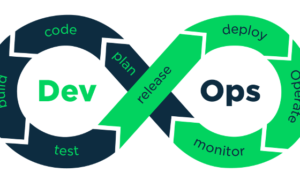Are you feeling the strain of remote work and grappling with the challenges of isolation and burnout? You’re not alone. In this fast-paced digital age, working remotely has become the norm for many individuals, but it comes with its own set of unique difficulties. From constant solitude to blurred boundaries between personal and professional lives, maintaining mental well-being can feel like an uphill battle. But fear not! In this blog post, we’ll explore practical strategies and expert advice to help you navigate the strains of isolation and burnout while thriving in your remote work environment.
Introduction: Understanding the Effects of Remote Work on Mental Health
Remote work is on the rise, with 43% of employees working remotely at least some of the time and 3.6% working exclusively remotely.
There are many benefits to working remotely, including increased flexibility and decreased commute time. However, there are also some potential downsides, such as increased isolation and feelings of burnout.
It’s important to be aware of the potential effects of remote work on mental health and to take steps to prevent or mitigate them. Here are some things to keep in mind:
Isolation can lead to feelings of loneliness and disconnection. To combat this, make an effort to connect with colleagues and friends outside of work and schedule regular check-ins with your team.
Burnout can be caused by many factors, including long hours, unrealistic deadlines, and a lack of autonomy. If you’re feeling burned out, take a step back and assess your workload. Are you taking on too much? Are there any areas where you could delegate or say no?
Working from home can be distracting, especially if you have young children or pets. Create a dedicated workspace for yourself, set boundaries with family members, and stick to a strict schedule as much as possible.
By being mindful of the potential risks associated with remote work, you can take steps to protect your mental health and well-being.
Impact of Isolation and Loneliness
The COVID-19 pandemic has forced many people to work remotely, which has led to increased feelings of isolation and loneliness. A lack of human interaction can be detrimental to our mental well-being, causing feelings of anxiety and depression.
Isolation can also lead to burnout, as we feel like we are constantly working with no breaks. It is important to take time for yourself and connect with others, even if it is through virtual means. There are many ways to combat the negative impacts of isolation, but it is important to be aware of the risks.
Symptoms to Look Out For
If you’re working from home, it’s important to be aware of the signs of isolation and burnout. Here are some symptoms to look out for:
- Feeling lonely or isolated If you’re feeling like you’re not connected to anyone, it’s important to reach out and connect with others.
- Feeling overwhelmed or stressed If you’re finding that your work is starting to feel like a burden, it’s important to take a step back and assess how you’re managing your time and workload.
- Feeling like you’re not good enough Imposter syndrome is common among remote workers. If you’re feeling like you’re not cut out for this way of working, it’s important to talk to someone about it.
- Feeling disconnected from your work If you’re no longer finding enjoyment in your work, it might be time to reassess your goals and priorities.
- Experiencing physical health problems If you find that you’re constantly tired or experiencing physical health problems, it’s important to talk to your doctor and see if there might be an underlying cause.
Strategies to Manage Stress and Avoid Burnout
When we think of burnout, we often think of it as something that occurs when we’re overworked. However, burnout can happen when we feel isolated and alone, even if we’re not working too much. The key to avoiding burnout is to manage our stress levels and create a healthy work-life balance.
There are a few key strategies you can use to manage stress and avoid burnout:
- Make time for yourself. It’s important to take some time out for yourself, even if you’re working from home. Make sure to schedule some “me time” every day, where you can do something you enjoy without work or other obligations getting in the way. This will help you relax and recharge, so you can be your best self at work.
- Connect with others: When we’re feeling isolated, it’s easy to become stressed and burned out. Make sure to stay connected with friends and family, either in person or online. Talking to others can help reduce stress and make us feel more supported.
- Get moving. Exercise is a great way to reduce stress and improve our mental well-being. Even if you can’t get to the gym, there are plenty of ways to get active at home (taking a brisk walk around the block, doing some yoga poses, etc.). Getting your body moving will help clear your mind and give you more energy.
Creating a Positive Working Environment
Working remotely can be a great way to improve your work-life balance and increase your productivity. However, it can also be a source of isolation and burnout if you’re not careful. Here are some tips for creating a positive working environment while working remotely:
- Set boundaries between work and personal time. It’s important to have set hours for work and stick to them. Otherwise, you may find yourself working all the time and never taking a break.
- Take breaks throughout the day. Get up and move around every few hours to keep your energy level up. And make sure to take at least one day off per week to recharge.
- Connect with co-workers and clients regularly. Whether it’s through video conferencing, instant messaging, or simply picking up the phone, regular communication will help you feel connected to others even when you’re physically alone.
- Make time for social activities outside of work. Join a club or organization, go out with friends, or volunteer in your community. Staying active outside of work will help you maintain a healthy balance.
- Establish a routine. Having a routine will help you stay organized and productive while working remotely. Wake up at the same time each day, take breaks at the same times, and set aside time each day for exercise or relaxation.
Taking Breaks and Taking Time for Yourself
It’s no secret that working from home can be a bit of a struggle. You’re constantly surrounded by distractions, you miss human interaction, and it’s easy to get burned out. That’s why it’s so important to take breaks and make sure you’re taking care of yourself.
Self-care is crucial when you’re working from home. Make sure you’re taking the time to do things that make you happy and relax you. This could be anything from reading, going for walks, or taking a yoga class. It’s important to find what works for you and make time for it every day.
In addition to making time for yourself, it’s also important to take breaks throughout the day. Get up and move around every few hours, take a walk outside, or just step away from your work area for a few minutes. Taking breaks will help you stay focused and avoid burnout.
Working from home can be tough, but by taking care of yourself and taking breaks, you can avoid the strains of isolation and burnout.
Conclusion
Remote work has its benefits, but it can also be a difficult and isolating experience. With the right strategies in place, you can navigate the mental health issues that come with remote work and maintain your well-being. Taking breaks throughout the day to stay connected to friends or family members, setting boundaries between work and personal life, and investing in hobbies outside of work are just a few ways to keep yourself mentally healthy while working remotely. It is important to remember that everyone’s needs are different when it comes to their mental health, so don’t hesitate to find what works for you!



































